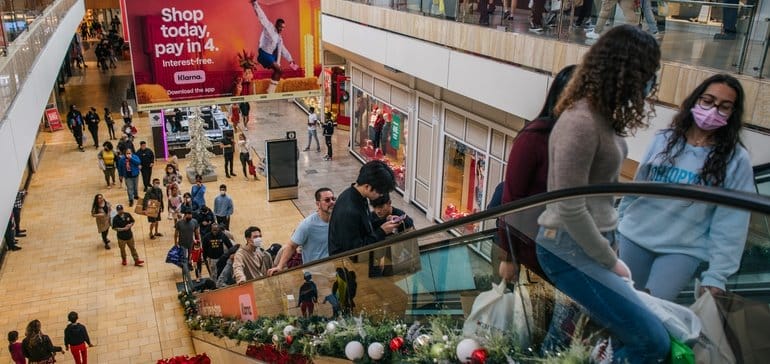Internet Marketing
Winners and losers of Black Friday 2021
A new article on Marketing Dive reports that vaccinations have made in-store shopping possible and even fun, but this holiday season remains complicated.

Perhaps above all, the pandemic isn’t over (and unfortunately could be entering another worrisome phase, according to a report from the World Health Organization over the Thanksgiving weekend). Throughout 2021, retailers and consumers have continued to grapple with its many consequences beyond the health threat, and that was evident on Black Friday.
Winners
- Thanksgiving: The trend from a few years ago — when several retailers ruined many a retail worker’s holiday by opening their doors for early Black Friday deals on Thanksgiving Day — is now decidedly in reverse. Malls run by Simon Property Group joined Walmart and several others in making a point of shuttering for the day; Target last week went so far as to say it will do so from now on.
- Buy now, pay later: In the old days, some retailers would make it easier for customers to splurge on holiday gifts by allowing them to put items on layaway to be paid for over time. The new layaway is “buy now, pay later,” made possible by a slew of platforms like Klarna and Affirm that facilitate installment payments. The payment alternative is shaping up to be a hallmark of this year. In November so far, compared to a similar period in 2019, BNPL-based spending was up 422% and order volume was up 438%.
- Curbs, again: With the lockdowns of 2020 over and vaccinations readily available in early 2021, foot traffic to malls and brick-and-mortar retailers has picked up all year. But consumers continue to embrace curbside pickup, out of ongoing pandemic concerns as well as a desire for convenience, according to Adobe. So far in November, curbside pickup is up 70% compared to two years ago, though on Nov. 26 it was applied to 20% of online orders, down from earlier in the month, Adobe found.
- Big box retail — by a little: Large retailers, with more robust supply chains to begin with and some cases the ability to charter their own ships, have yet another advantage this year over their smaller rivals. Since October, large retailers saw a 22% higher growth in revenue on average than small retailers, according to Adobe.
Losers
- Supply chain: The ongoing supply chain debacle — one of the most vivid indications that the pandemic is far from over — has not been solved in time for the holiday season. Out-of-stock messages were up 124% in November so far compared to January 2020, according to Adobe. The situation has its upsides, as seen in higher prices. And consumers will likely find what they need, according to AlixPartner’s Rampoldt.
- Discounts: Holiday marketing centers around special deals, but this year retailers are hewing as close as possible to full price, according to several reports. On Thanksgiving Day in the U.S., the average discount was 27%, down 7% from last year, with the average order value up 11%, despite the fact that 3% fewer items were purchased, Salesforce found. From Nov. 23 to Nov. 25, the average selling price in the U.S. was up 22% compared to the same period last year, per that report.
- Footfall: With more retailers keeping their doors locked on Thanksgiving, it’s no surprise that, as Sensormatic Solutions found, visits to brick-and-mortar stores fell 90.4% that day compared to two years ago. A majority (65%) of U.S. consumers plan to shop in-store this holiday season to get gift ideas or check out products in person, and some are going to stores to head off any delivery delays, per that report. But while in-store shopping on Black Friday was up compared to last year, it was down 28.3% compared to pre-pandemic 2019, Sensormatic also found.


